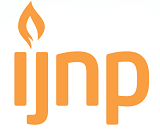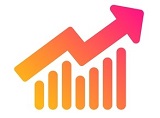The Correlation Between Being Informed on Complementary and Alternative Medicine and Its Reported Use Among Cancer Patients in Yogyakarta
DOI:
https://doi.org/10.18196/ijnp.v5i1.9558Keywords:
Cancer, Complementary And Alternative Medicine, Information, Palliative CareAbstract
Background: Previous studies have indicated that the majority of cancer patients have used self-selected Complementary and Alternative Medicine to relieve disease-related symptoms and treatment-related adverse effects untreated by conventional treatment to improve the quality of life. Unfortunately, studies on Complementary and Alternative Medicine use among cancer patients, especially in Yogyakarta, the city with the highest cancer prevalence in Indonesia, are still limited.
Objective: This present study aims to identify the correlation between being informed on Complementary and Alternative Medicine and its reported use among cancer patients.
Methods: This study was a descriptive correlational study on 75 consenting cancer patients. The respondents were selected using a purposive sampling technique. Data about their Complementary and Alternative Medicine use were collected by administered questionnaires and analyzed using descriptive statistics and bivariate analysis.
Results: 25.3% of respondents had used Complementary and Alternative Medicine. Being informed on Complementary and Alternative Medicine and its reported use among cancer patients were significantly correlated (r=0.331; p=0.002).
Conclusion: Complementary and Alternative Medicine use among cancer patients was still limited. Health providers need to discuss Complementary and Alternative Medicine use with their patients openly.
References
Almasdy, D., Eptiyeni, E., Khamri, D., Kurniasih, N. (2018). Use of Complementary and Alternative Medicine (CAM) among Breast Cancer Patients in a Public Hospital in Padang, Indonesia. Journal of Young Pharmacists. 10(2) Suppl:2145-s147. doi:10.5530/jyp.2018.2s.30.
American Cancer Society (ACS). (2017). Sign and Symptom of Cancer [online]. https://www.cancer.org/cancer/cancer-basics/signs-and-symptoms-of-cancer.html [Accessed 23 Januari 2019].
Ben-Arye, E., Massalha, E., Bar-Sela, G., Silbermann, M., Agbarya, A., Saad, B…..Schiff, E. (2014). Stepping from traditional to integrative medicine: perpectives of Israeli-Arab patients on complementary medicine’s role in cancer care. Annals of Oncology; 25: 476-480. doi:10.1093/annonc/mdt554.
Berretta, M., Della Pepa, C., Tralongo, P., Fulvi, A., Martellotta, F., Lleshi, A., … Facchini, G. (2017). Use of Complementary and Alternative Medicine (CAM) in cancer patients: An Italian multicenter survey. Oncotarget, 8(15).doi:10.18632/oncotarget.14224.
Chiu, L., Balneaves, L., Barroetavena, M.C., Doll, R., Leis, A. (2006). Use of complementary and alternative medicine by Chinese individuals living with cancer in British Columbia. Journal of Complementary and Integrative Medicine; 3(1). doi:10.2202/1553-3840.1037.
Dogu, G.G., Kargi, A., Tanriverdi, O., Yaren, A., Demiray, G., Taskoylu, B.Y., Ergin, A. (2014). Complementary/alternative medicine experience in cancer patients: a questionnaire-based survey. International Journal of Hematology and Oncology,1(24): 45-53. doi:10.4999/uhod.12008.
Dy, S.M., Apostol, C.C. (2010). Evidence-based approaches to other symptoms in advanced cancer. Cancer Journal; 16: 507–513. DOI: 10.1097/PPO.0b013e3181f45877.
Effendy, C., Vissers, K., Osse, B. H. P., Tejawinata, S., Vernooij-Dassen, M., Engels, Y. (2014). Comparison of Problems and Unmet Needs of Patients with Advanced Cancer in a European Country and an Asian Country. Pain Practice; 15(5): 433-40. doi: 10.1111/papr.12196.
Evans, M., Shaw, A., Thompson, E.A., Falk, S., Turton, P., Thompson, T., Sharp, D. (2007). Decisions to use complementary and alternative medicine (CAM) by male cancer patients: information-seeking roles and types of evidence used. BMC Complementary and Alternative Medicine. 7(25). doi:10.1186/1472-6882-7-25.
Ezeome, E.R., Anarado, A.N. (2007). Use of complementary and alternative medicine by cancer patients at the University of Nigeria Teaching Hospital Enugu Nigeria. BMC Complementary and Alternative Medicine. 7(28). doi:10.1186/1472-6882-7-28 .
Field, K.M., Jenkins, M.A., Friedlancer, M.L., McKinley, J.M., Price, M.A., Weidman, P., … Phillips, K.A. (2009). Predictors of the use of complementary and alternative medicine (CAM) by woman at high risk for breast cancer. European Journal of Cancer; 45: 551-560. doi:10.1016/j.ejca.2008.09.023.
Frenkel, M., Abrams, D. I., Ladas, E. J., Deng, G., Hardy, M., Capodice, J. L., … Block, K. I. (2013). Integrating Dietary Supplements Into Cancer Care. Integrative Cancer Therapies, 12(5), 369–384.doi:10.1177/1534735412473642.
Gentry-Maharaj, A.; Karpinskyj, C.; Glazer, C.; Burnell, M.; Bailey, K.; Apostolidou, S.; Ryan, A.; Lanceley, A.; Fraser, L.; Jacobs, I.; Hunter, M. S.; Menon, U. (2017). Prevalence and predictors of complementary and alternative medicine/non-pharmacological interventions use for menopausal symptoms within the UK Collaborative Trial of Ovarian Cancer Screening. Climacteric, 20(3):1–8. doi:10.1080/13697137.2017.1301919.
John, G. M., Hershman, D. L., Falci, L., Shi, Z., Tsai, W.-Y., & Greenlee, H. (2016). Complementary and alternative medicine use among US cancer survivors. Journal of Cancer Survivorship, 10(5), 850–864.doi:10.1007/s11764-016-0530-y.
Klafke, N., Eliott, J.A., Wittert, G.A., & Olver, I.N. (2012). Prevalence and predictors of complementary and alternative medicine (CAM) use by men in Australian cancer outpatients services. Annals of Oncology; 23(6): 1571-1578. doi:10.1093/annonc/mdr521.
Ministry of Health of Republic Indonesia. (2018). Hasil utama Riset Kesehatan Dasar (RISKESDAS) 2018 [Main results of Basic Health Research (RISKESDAS) 2018]. Jakarta: Kementerian Kesehatan Badan Penelitian dan Pengembangan Kesehatan.
National Center for Complementary and Alternative Medicine (NCCAM). (2011). What is complementary and alternative medicine?. November 2018. http://nccam.nih.gov/health/whatiscam/. [Accessed 23 Februari 2019].
Paepke, D., Wiedeck, C., Hapfelmeier, A., Kiechle, M., Brambs, C. (2020) Frequency and Predictors for the Use of Complementary Medicine among Gynecological Cancer Patients. Journal of Alternative Complementary & Integrative Medicine 6: 133. DOI:10.24966/ACIM-7562/100133.
Pihlak, R., Liivand, R., Trelin, O., Neissar, H., Peterson, I., Kivistik, S., … Jaal, J. (2014). Complementary medicine use among cancer patients receiving radiotherapy and chemotherapy: methods, sources of information and the need for counselling. European Journal of Cancer Care, 23(2), 249–254.doi:10.1111/ecc.12132.
Shin, J-Y., Kim S.Y., Park, B., Park, J-H., Choi, J.Y., Seo, H.G., Par, J-H. (2012). Predictors of complementary and alternative medicine use in cancer care: results of nationwide multicenter survey in Korea. Evidence-Based Complementary and Alternative Medicine. Vol 2012. doi:10.1155/2012/212386.
Watanabe, S.M., Nekolaichuk, C.L., Beaumont, C. (2012). The Edmonton Symptom Assessment System, a proposed tool for distress screening in cancer patients: development and refinement. Psychooncology. 21(9):977-85. doi: 10.1002/pon.1996.
Downloads
Additional Files
Published
Issue
Section
License
License
Articles published in the IJNP (Indonesian Journal of Nursing Practices) are licensed under a Attribution 4.0 International (CC BY 4.0) license. You are free to:
- Share — copy and redistribute the material in any medium or format.
- Adapt — remix, transform, and build upon the material for any purpose, even commercially.
This license is acceptable for Free Cultural Works. The licensor cannot revoke these freedoms as long as you follow the license terms. Under the following terms:
Attribution — You must give appropriate credit, provide a link to the license, and indicate if changes were made. You may do so in any reasonable manner, but not in any way that suggests the licensor endorses you or your use.
- No additional restrictions — You may not apply legal terms or technological measures that legally restrict others from doing anything the license permits.
Copyright
Authors who publish with IJNP (Indonesian Journal of Nursing Practices) agree to the following terms:
- Authors retain copyright and grant IJNP (Indonesian Journal of Nursing Practices) the right of first publication with the work simultaneously licensed under an Attribution 4.0 International (CC BY 4.0) that allows others to remix, adapt and build upon the work with an acknowledgment of the work's authorship and of the initial publication in IJNP (Indonesian Journal of Nursing Practices).
- Authors are permitted to copy and redistribute the journal's published version of the work (e.g., post it to an institutional repository or publish it in a book), with an acknowledgment of its initial publication in IJNP (Indonesian Journal of Nursing Practices).














